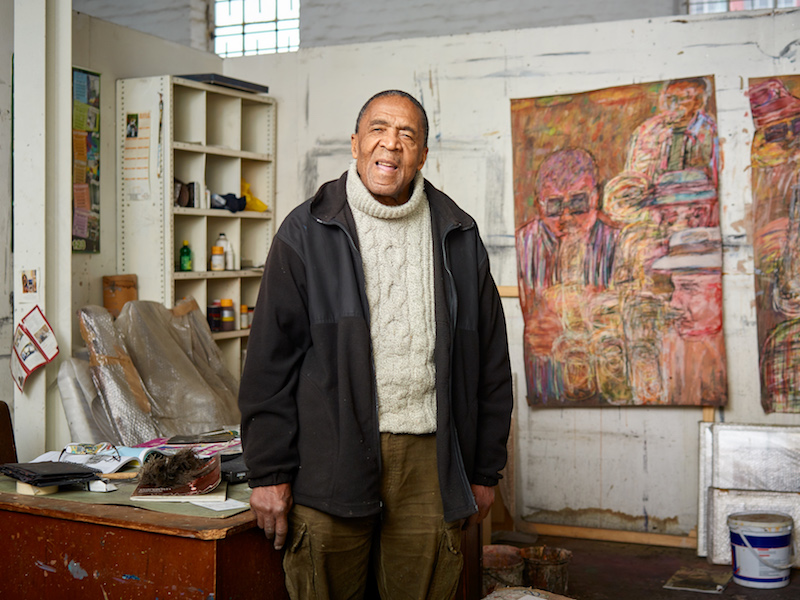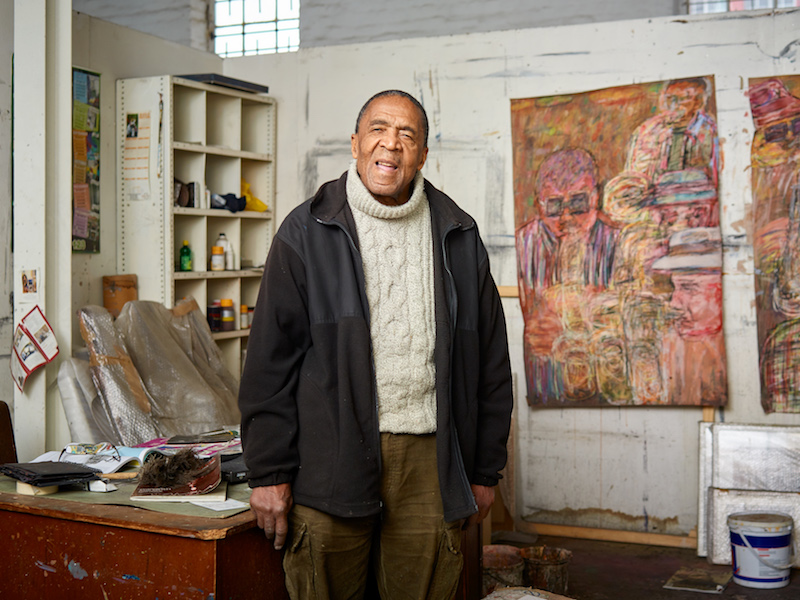[ad_1]

David Koloane.
COURTESY GOODMAN GALLERY
David Koloane, one of the most important artists to come out of apartheid-era South Africa, has died at 81. His death was announced by Goodman Gallery, which represents him in Johannesburg and Cape Town.
Liza Essers, the gallery’s director, said in a statement, “David’s life and work stand as a testament to the indomitable nature of the human spirit, and its ability to overcome all obstacles with humility and grace. We are left today with David’s immeasurable contributions to South African art and society. He will be sorely missed.”
Koloane’s work—which comprised art-making, curating, activism, and writing—dealt head-on with colonialism and the continued oppression of black South Africans. His work, which often takes the form of semi-abstract cityscapes, evokes the tensions felt in his country through clusters of swirling lines and compositions that evoke violence.
In 2013 Koloane represented South Africa at the Venice Biennale. His work is currently the subject of a survey at the Iziko South African Museum in Cape Town.
“My work can be said to reflect the socio-political landscape of South Africa both past and present,” his artist statement reads. “The socio-political conditions created by the apartheid system of government have to a large extent transfixed the human condition as the axis around which my work evolves. The human figure has become the icon of creative expression.”

David Koloane, The Bacchanalia, 2016.
COURTESY GOODMAN GALLERY
Some have viewed Koloane’s curatorial work as his most significant contribution to South African art history. In 1977 Koloane opened the first-ever art space in Johannesburg dedicated specifically to black artists. The year after, Koloane was one of many artists and curators to help establish the Federated Union of Black Artists Arts Centre, one of the places that would educate non-white creators in the country. (FUBA was also essential in bringing art from the West to South Africa—British sculptor Anthony Caro was invited to lecture there, and wound up rallying many of his colleagues to travel their work to South Africa. In a letter to Clement Greenberg, he called FUBA “a sort of ICA.”)
In 1991 Koloane, who was vocal about the difficulties black artists faced in getting an education in South Africa, worked with Robert Loder and Sandra Burnett to launch the Bag Factory Artists’ Studios in Johannesburg. It still offers studio spaces to artists in the country, and it now gives out an annual residency award bearing Koloane’s name.
One of Koloane’s most famous efforts came in 1995 with the exhibition “Seven Stories About Modern Art in Africa,” which was organized by the Whitechapel Gallery in London as part of a multi-institution African art festival. Recent shows at the time, such as the famed “Magiciens de la Terre,” had put contemporary African art on the map in the West, but they had done so by emphasizing folk art rather than so-called fine art. Whitechapel curator Clémentine Deliss wanted a different perspective, and so she invited seven African academics, curators, and artists to organize mini-shows. Koloane’s focused on South African art.
While “Seven Stories About Modern Art in Africa” received mixed reviews in England, it has since been written into history. Writing for the website Contemporary And, which publishes criticism about modern and contemporary African art, Julie Friedel said that the show “opened up a new chapter on exhibitions about the artistic discourse in Africa.”
[ad_2]
Source link

